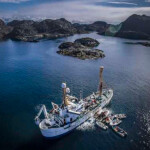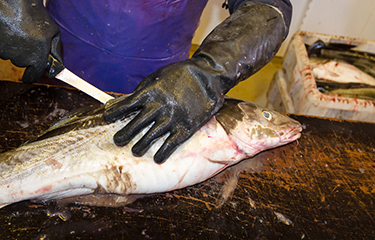Norway and Russia have agreed to cut fishing of Barents Sea cod by 20 percent, contributing to a predicted drop in global supplies of the species in 2024.
The Norwegian-Russian Joint Fishery Commission agreed to a 453,427 metric ton (MT) total allowable catch for cod in the Barents and Norwegian seas. That total will be split between multiple countries, with Norway receiving 212,124 MT, and Russia receiving most of the rest of the quota and some countries in the E.U. receiving a smaller share.
The total quota overall represents a 20 percent decrease from the 566,784 MT quota available in 2023, which was in turn a 20 percent decrease from the 708,480 MT available in 2022. That, too, was a 20 percent decrease from the 885,600 MT available in 2021.
The totals are in line with advice from scientists at the Norwegian Institute of Marine Research, who warned in 2022 that the spawning stock biomass was at around 800,000 MT, the lowest level it has been since 2008. The years in between were better for cod, when the stock reached a record 2.3 million MT in 2013, but has been on a steady decline ever since that peak.
Researchers also warned in 2022 that the stock was likely to fall further.
"We expect the stock to continue the decline also into the next quota advise, before it levels out," Norway Institute of Marine Research Scientist Bjarte Bogstad said in a release at the time. “The cod population in the Barents Sea remains large and important, but the boom is over.”
The Norway Institute of Marine Research was involved with setting the quota after the International Council for the Exploration of the Seas (ICES) temporarily banned Russian delegates from participating in the organization’s activities in response to Russia’s invasion of Ukraine. Instead, a bilateral working group of Norwegian scientists from the Institute of Marine Research and Russian scientists from the research institute VNIRO work together to establish quota advice, based on the same methodology and framework used by ICES.
Norwegian Fisheries Minister Cecilie Myrseth, who was recently appointed to the position, said it was good that Russia and Norway managed to reach an agreement on the quota despite the downturn in quota.
“The agreement ensures long-term and sustainable marine management in the northern areas, and is fundamental for us to be able to take care of the cod population and the other species in the Barents Sea,” she said in a release.
The drop in cod quota in the Barents Sea is reflected in recent predictions by the International Groundfish Forum. The forum reported that the overall supply of cod globally would drop by 26.8 percent compared to 2023, with Norway, Russia, and Iceland all seeing drops in catch.
Despite the drop in cod quota, Norwegian fishermen did get some good news in the form of additional caeplin quota. In total, Norway will be able to catch 196,000 MT of capelin in 2024, an increase of 134,000 MT, or 216 percent.
“It is particularly gratifying that we have received such a high quota of 196,000 [MT],” Myrseth said. “This is the highest capelin quota since 2018.”
Photo courtesy of Piotr Wawrzyniuk/Shutterstock







